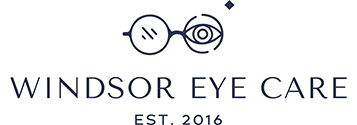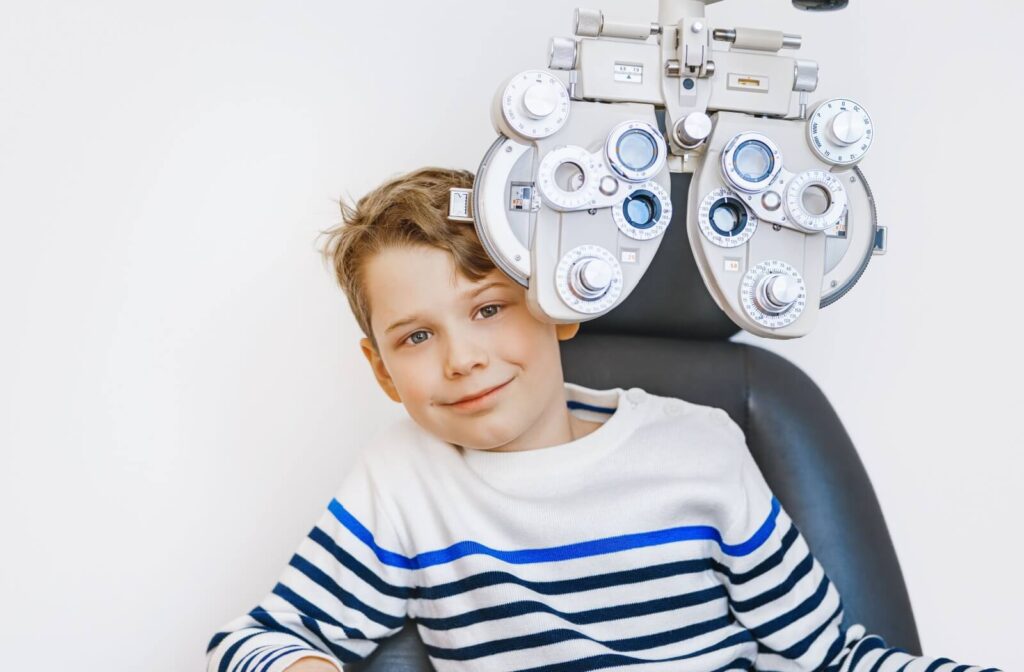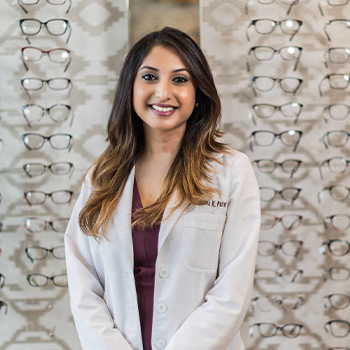Every year, we can’t help but smile when our children outgrow their clothes or their shoes. These are real milestones in their growth and development! However, if your child has myopia, we can’t say the same when it comes to their annual eye exam.
Myopia can progress and worsen with age.
As your child’s vision grows weaker, their prescription gets stronger. It isn’t just about needing heavier corrective lenses; myopia tends to progress without proper management.
A Closer Look at Myopia Progression
Myopia is a refractive error that occurs when the eye’s shape elongates or the cornea curves too much, causing incoming light to focus in front of the retina, instead of directly on it.
It might sound like a small hiccup, but the eye’s shape influences how well you can see. Ideally, the eye is perfectly round, which encourages light to focus properly on the retina for clear vision. In this case, since light falls in front of the retina, myopia leads to blurry distance vision while eyesight up close remains clear.
Most myopia develops during childhood, typically between ages 6 and 14, when the eyes are still growing. During these crucial years, the condition often worsens as the eye continues to elongate and grow, before gradually stabilizing during early adulthood. The result? Vision that becomes weaker.
But that’s what glasses are for, right? Not exactly. You see, glasses and contact lenses correct vision, addressing the symptoms that come with myopia (blurry vision, headaches, eye strain, etc.). They don’t address myopia’s primary concern: its progression.
Why Does Myopia Progress?
Myopia progression doesn’t always stem from one main cause—the eyes are sensitive and responsive to several factors that contribute to worsening myopia:
- Genetics: If one or both parents have myopia, children are more likely to develop it and experience faster progression.
- Environmental factors: The muscles that control focusing work harder during close-up tasks, potentially triggering the eye growth that leads to myopia progression.
- Less outdoor time: Children who spend more time outdoors have lower rates of myopia development and slower progression than children who spend less time outdoors in natural sunlight.
- Eye growth: Children’s eyes grow quickly during school years. As the eye lengthens, myopia typically worsens, requiring stronger prescription glasses or contact lenses.
The problem with worsening myopia isn’t just that vision gets weaker and prescriptions get stronger; it’s that this condition physically stresses the eye. Though powerful, our eyes are delicate.
As its shape continues to lengthen, it affects structures inside the eye (retina, optic nerve, etc.), which increases a person’s risk of developing serious concerns in the future.
Luckily, there’s an easy way to help address this concern: myopia control therapies.
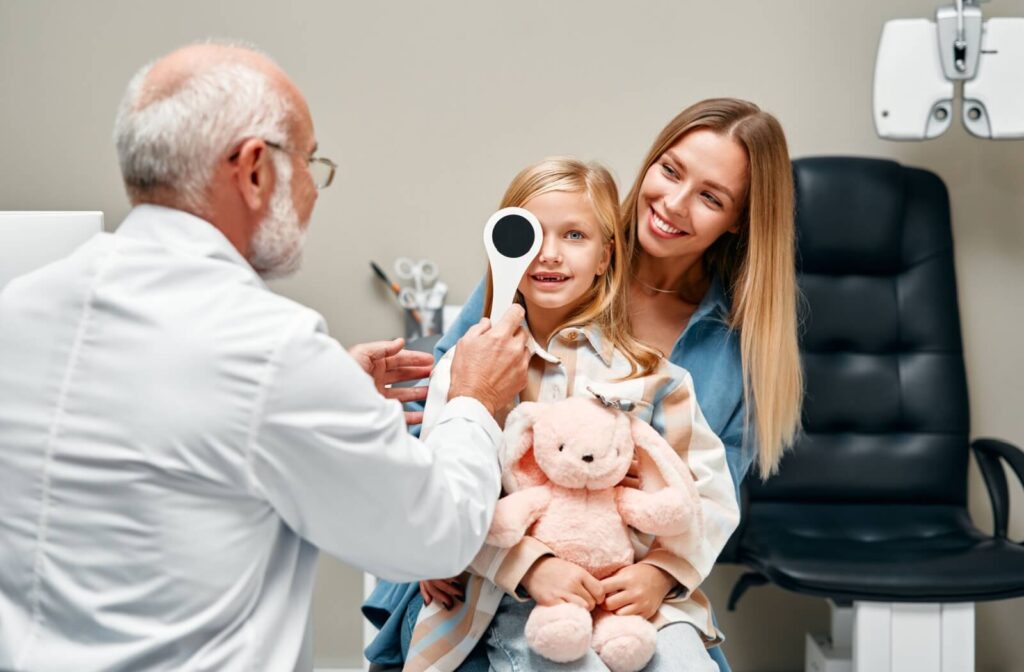
An Introduction to Myopia Control
We cannot reverse or cure myopia, but we can take effective measures to prevent this condition from progressing and further worsening your child’s vision. This is where myopia control (or myopia management) comes in.
Myopia control is a group of special strategies that aim to slow how far a child’s eye grows. These therapies aren’t only for children—young adults can also benefit from them, too—but the sooner we take action, the better.
Patiently waiting for your child’s vision to stabilize isn’t ideal. Not only does it take years (they could be well into early adulthood), but studies suggest that even mild myopia isn’t healthy for your eyes. This is why many eye doctors recommend starting myopia management as soon as we detect it (highlighting the importance of annual children’s eye exams) rather than waiting to see how much it progresses.
Your Guide to Myopia Management
Every child’s myopia journey is unique. After evaluating your child’s vision and eye health, we create a comprehensive management plan that aligns with their specific needs and lifestyle to help preserve their vision.
Here’s a closer look at the strategies we offer:
MiSight Contact Lenses
MiSight contact lenses look like a traditional pair of soft contact lenses, but they do more than just correct your child’s vision. These specialty lenses can effectively slow myopia progression by up to 59%, all thanks to their unique design.
The science behind these lenses lies in their dual-focus feature. The center of the lens corrects distance vision, while concentric rings that encircle it create myopic defocus, signaling the eye to slow its elongation.
As daily disposable lenses, MiSight contacts are incredibly child-friendly, eliminating concerns about cleaning and storing lenses. Children simply pop in a fresh lens every day, reducing the risk of eye infections, making this a simple routine to maintain.
Corneal Reshaping Therapy (Orthokeratology)
Corneal Reshaping Therapy (CRT), also known as orthokeratology (or ortho-k), offers a completely different approach to myopia control.
Your child wears these specialty contact lenses while they sleep—instead of during the day—to gently reshape their cornea. When they remove the lenses in the morning, this reshaping provides clear vision without the need for corrective lenses. The result? Myopia control, along with freedom from glasses or traditional contacts.
What’s more, this reshaping is temporary and reversible. If your child stops wearing the lenses, their cornea gradually returns to its original shape over several weeks. However, with any treatment, we strongly recommend consulting your optometrist before drifting away from your child’s myopia management plan.
Support Your Child’s Vision
You don’t have to watch helplessly as your child’s prescription gets stronger each year. Myopia management offers real solutions that can positively support your child’s visual health. The key is taking action sooner rather than later.
Your child’s vision is precious, and protecting it is one of the most important investments you can make in their future. Connect with Windsor Eye Care and book an appointment. Let your child’s myopia journey start today!
